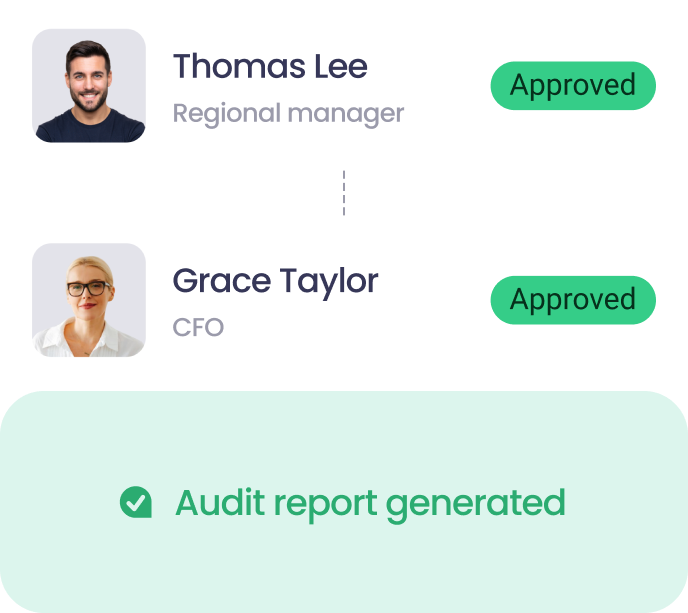
Why multi-entity accounting matters and how to get it right
- What is multi-entity accounting?
- How multi-entity accounting works
- Why multi-entity accounting matters
- Which businesses need multi-entity accounting
- Who is affected by multi-entity accounting
- Benefits of multi-entity accounting
- The hidden costs of ignoring it
- How to implement multi-entity accounting
- How automation helps
- Success cases
- FAQs
Managing multiple entities in Xero, QuickBooks Online, or NetSuite can be a real challenge for finance teams. Without the right systems in place, consolidating everything often feels like a continuous uphill struggle. This can lead to inconsistent data, delayed reporting, and less time for crucial strategic decision-making.
Working with inefficient processes doesn't only result in reporting issues, they also grow the workload quickly, adding hours of extra work each week. QuickBooks found that businesses spend an average of 25 hours each week on manual data entry and reconciliations, time that could be better spent driving growth. That’s where multi-entity accounting comes in.
In this article, we’ll look at what multi-entity accounting means, why it matters for finance teams, and how the right tools can make managing multiple entities more accurate, compliant, and efficient.
• Using a unified chart of accounts and shared approval policies speeds up consolidation.
• Weak intercompany processes quietly erode trust in financial reporting.
• Real growth happens when finance teams spend time analysing, not compiling, data.
• The right automation tools let finance teams scale without increasing workload.
What is multi-entity accounting?
Multi-entity accounting is the process of managing the finances of several legal entities separately while still bringing them together into one clear group-level view.
It’s useful for:
- A holding company with several subsidiaries
- A retail chain with each store set up as its own entity
- A nonprofit with regional branches
Every entity runs its own books, but finance teams still need to bring everything together. That’s what sets multi-entity apart from single-entity accounting, where all transactions sit in one set of books.
A key part of this process is managing intercompany transactions (sales, loans, or shared expenses between entities). If these aren’t eliminated during consolidation, they can inflate revenue and costs in group accounts.
• Entity: a separate legal accounting unit
• Subsidiary: an entity owned or controlled by a parent
• Consolidation: combining the financials of all entities into a group view
How multi-entity accounting works
Here are some examples of how multi-entity accounting works in practice:
Why multi-entity accounting matters
Multi-entity accounting goes beyond routine financial tasks. It helps businesses reduce risk, stay compliant, and make more informed financial decisions.
Risk of fragmentation & data silos
Without a multi-entity framework, entities operate alone. Data gets siloed, numbers don’t match, and reports come in late. On top of that, intercompany balances can slip through the cracks, making the group accounts unreliable
|
In practice, this shows as: Two subsidiaries log similar costs differently:
These costs are the same, but different names mean they are not aligned at group level. |
Compliance, audit, and regulatory needs
Auditors, regulators, and investors require consolidated accounts with clear eliminations. Without proper processes in place, organisations can fail audits, lose credibility, and be subject to penalties.
Multi-entity accounting addresses these challenges by applying consistent policies and building clear audit trails.
Operational efficiency & accuracy
Manual reconciliations drag out month-end and make mistakes more likely. Instead of spending days chasing discrepancies, finance teams can standardise and automate consolidations to close in hours rather than days, cutting stress and boosting accuracy.
Strategic insight, scalability & control
Entity-level detail is useful, but the group-wide view is just as important.
Multi-entity accounting provides both. It helps businesses share resources wisely, keep costs under control, and make better decisions. Clear processes also make it easier to grow and stay consistent as new entities are added.
Which businesses need multi-entity accounting
Multi-entity accounting is not just for global companies, it’s also useful for:
-
Corporations with subsidiaries, where each one keeps its own records, but reports need to be combined.
-
International companies that deal with currencies, tax, and compliance differences.
-
Franchises & retail chains that compare performance across entities with centralised reports.
-
Nonprofits & NGOs delivering transparent reporting across branches.
-
Real estate groups managing separate properties but needing to see things at group-level.
-
Private equity firms tracking several portfolio companies and reporting to investors.
-
Growing SMEs expanding quickly, creating multi-entity needs.
Who is affected by multi-entity accounting
Multi-entity accounting affects more than just the finance team. Here’s how different roles are impacted:
Benefits of multi-entity accounting
Multi-entity accounting brings everything into one clear view without losing local detail. Close faster, apply the same rules everywhere, and grow into new markets with less admin and lower risk. In short, multi-entity accounting gives you the clarity and control you need to grow confidently.
The hidden costs of ignoring it
Skipping multi-entity accounting brings risks:
-
Operational inefficiencies. Hours are wasted and errors are made
-
Compliance failures, leading to penalties or failed audits.
-
Strategic blind spots. Leaders shouldn’t make decisions without full data.
-
Financial leakage as a result of unbalanced intercompany activity.
How to implement multi-entity accounting
Here are 6 simple steps to get started and build consistency:
- Use the same chart of accounts and tax codes for all entities
- Set rules for intercompany pricing and eliminating duplicate entries
- Make clear approval policies for each entity and department
- Try it out with one entity first, then roll it out to the others
- Train approvers with simple guides
- Review after the first close and tweak the process as needed
How automation helps
Automation takes the manual work out of consolidations, accounts payable (AP), and accounts receivable (AR). Here’s how:
Success cases: multi-entity accounting in practice
Multi-entity accounting delivers real benefits when automation is put into practice. Businesses that once struggled with slow approvals, complex reconciliations, and inconsistent reporting are now closing faster and working with greater confidence. Here are some real-world cases where automation has helped multi-entity companies improve their financial processes and take control of their numbers.
Neighbourgood gains control over multi-market spend
Property and hospitality group Neighbourgood used ApprovalMax across 16 entities in South Africa and the United States to manage everything from OPEX to supplier invoices. They now save an average of 57 hours each month, approve around 340 documents, and maintain real-time visibility over spending. This shift gives their finance team more time to focus on growth instead of firefighting.
PartnerHero cuts approval time by 60 %, saves 200 hours monthly
Global BPO PartnerHero rolled out automation across seven entities in six countries and integrated it with their switch to NetSuite. They reduced approval time by 60 percent, saved over 200 hours every month, and now have about 90 approvers managing invoices with greater visibility and control.
Mazars client secures rigid control across multiple project entities
A renewable energy company operating across multiple project sites relied on Mazars to implement automation across its entities during project build-out. They replaced paperwork and approvals that often got delayed or lost with automated workflows, PO-to-invoice matching, and mobile approvals. As a result, the company gained tighter control over spending tied to project financing, kept reports aligned with bank requirements, and made its approval process fully traceable and audit ready.
Paddle Australia slashes errors by 80% and regains hundreds of hours
Paddle Australia, a not-for-profit organisation with multiple branches and funding sources, integrated ApprovalMax alongside Xero and EzzyBills to automate financial approvals. The finance team cut manual errors by 80 percent, saved around 28 hours every month, and gained full visibility into approvals even when out of office. Approvals now move faster, coding mistakes are reduced, and audits are easier to manage.
Choosing the right solution
When searching for a multi-entity accounting solution, always consider the following features:
- Handles consolidation, intercompany eliminations, and multiple currencies
- Works with your ERP, payroll, and tax tools
- Grows easily as you add new entities
- Automates workflows and reconciliations
- Offers clear dashboards with drill-down reporting
- Provides compliance controls and audit trails
- Transparent pricing and good vendor support
How ApprovalMax fits into your accounting
Multi-entity accounting gives finance teams better visibility, lowers risks, and improves accuracy – but only if processes are consistent.
ApprovalMax handles approvals for bills, POs, sales invoices, and credit notes – even between entities. It checks vendors, keeps budgets under control, and maintains a full audit trail. When you pair this with a consolidation tool, it makes group reporting and eliminations easier. This means fewer manual steps, faster approvals, and a clear view of all your entities. Learn more here.
FAQs
What is multi-entity reporting?
Multi-entity reporting is the process of creating financial reports that bring together data from different subsidiaries, branches, or legal entities within a group. It gives finance teams clear visibility across the organisation while still allowing them to drill down into each entity’s performance.
What is multi-entity consolidation?
Multi-entity consolidation is the process of combining financial data from multiple entities into one set of accounts. This makes group-level reporting accurate, compliant, and ready for stakeholders, audits, and strategic decision-making.
What is a multi-entity organisation?
A multi-entity organisation is a business that operates through several legal entities, such as subsidiaries, branches, or international divisions. Each entity may have its own accounts, but together they form part of a single group structure.
What is a multi-entity business?
A multi-entity business is a company that manages more than one entity under its control, often across different regions or industries. Finance teams in these businesses need systems that allow them to manage approvals, reporting, and compliance across all entities efficiently.
Ready to Simplify Your Approval Process?
Justin Campbell, an experienced accountant with a decade at Xero, blends his deep understanding of finance and technology to simplify processes. He uses his expertise to help businesses work smarter, bringing precision and innovation to every initiative.
Set up a system of checks and balances for your financial operations.
Multi-step, multi-role approval workflows for financial documents.

Auto-generated audit reports for each approved item.

Get alerts for fraudulent activity and protect against it happening.
Leave printing in the past with fully digitised workflows.





